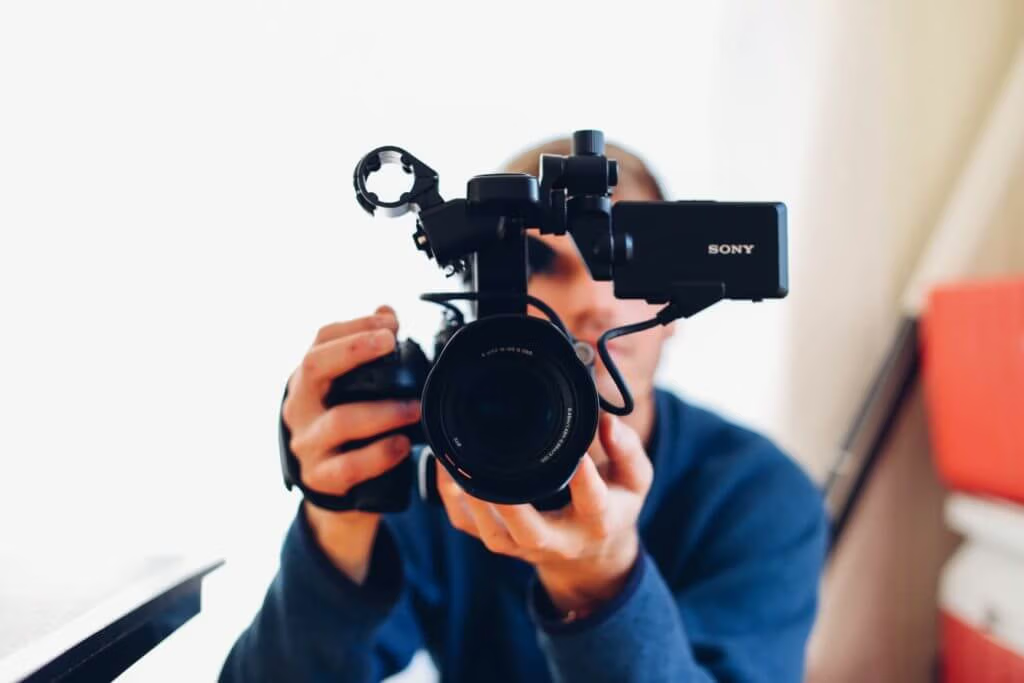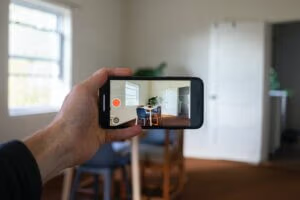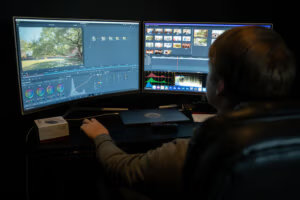Have you ever wondered what it looks like to be an audio/video strategist? We believe that we have the best in the business here at Dogwood and we wanted to give an inside scoop on what his day to day job looks like. We sat down with Nick Wells, our audio/video strategist, and learned about the ins and outs of all things audio and video. Check it out:
What does your job entail?
Videography, Lighting, Drone Pilot, Video Editing, Motion Graphics, Audio (recording, editing, mixing), Photography, Video and Photo Colorist, A/V Equipment Consultations, and Installations.
(He’s a busy guy!)
What is your favorite kind of project to work on and what is your least favorite?
I really like working on things that are more narrative. It makes it easier to lose myself (in a good way) in the process while trying to edit to or create a cohesive narrative, even when working on commercials.
Some of the more “difficult” projects are purely informational videos. Contrary to what I like about narrative, informational types of videos are usually easier but they are not about getting the audience invested in a story or narrative. It’s just about getting information out there.
It’s similar to why I like fiction books over self-help/informational type books. Both types of videos have their places but the narrative projects are definitely more fun.
How did you first get into the audio/visual world?
I started running audio for my church when I was 12. From there I started recording music for fun which turned into freelance recording and live audio gigs. Then I went to school for Audio Production where I became interested in audio post-production which led to film and video production. After graduating, I was working as a game audio Sound Designer and I was shooting simple videos and learning how to video edit and color correct. That led to picking up a few freelance jobs for video work. A few years later I’m working as an Audio/Video Strategist for a really cool digital marketing company.
What are some important things you have to do when putting together a video for a client?
The first thing is to always try to understand what the client is looking for. I have a saying that “Everyone has a voice. It’s my job to help them find that voice and use it to help them tell their story.” The reason clients usually want a video made is that it is a great communication tool. Once you know what the client wants everything else is created to fit that.
During shoots, having a clear idea of where I’m shooting is important. Two of the most important aspects of videography (and photography) is composition and lighting. Learning the location and seeing the subject through the lens to get the composition will determine everything else about the shoot. Sometimes you have to base the composition on the available light but the composition needs to serve the vision of the final product. Then focus on lighting. Lighting can make or break most footage. If I can understand the lighting of a location and how to add, subtract, or modify light then the composition will turn out way better.
What are some important things you have to do when putting together an audio project for a client?
Get a good recording! The space a recording is recorded in will have a huge effect on the audio, so choose the right space. Another important part is to use the right type of mic for the location. If you can’t control the reverb/acoustics of the room then a shotgun mic will be best. If you have an acoustically controlled space then a large-diaphragm mic (with a pop filter for close range vocals) will give you the best quality audio. If you’re dealing with wind noise then make sure you use a windshield or a couple of different windshields.
Shortcuts will only lower the potential quality and add so many headaches trying to repair the audio in post-production. That time should be spent mixing and mastering to create amazing audio rather than repairing just to bring the audio to a bearable quality.
Why would a client benefit from a professional video?
Since a picture is worth a thousand words, at 30 frames per second you’d get 30 pictures per second and for a minute-long video you’d get 1800 pictures, which gives you 1,800,000 words. That’s a lot of “words”. That was a joke…
In all seriousness, videos can communicate so much. It can communicate a mood or deliver a lot of information. It can make viewers feel happy or energetic. It can make you smile or invoke tears.
There is so much flexibility in this medium so using it to communicate a vision is something that every company or client could absolutely take advantage of.
Is there anything else you’d like to add?
Nope… I like dogs, coffee, and donuts.
He’s good at his job AND he’s got a sense of humor! If you need a video or audio project done, you know who to call. Nick will take care of you every step of the way. Give him a call today!


